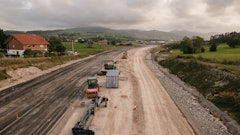To the general public, it may seem a misnomer to call demolition a "green" process. After all, to many, demolition brings to mind images of imploded structures, dust clouds and piles of debris. Yet, the demolition industry has long been a proponent of recycling, actively promoting the need to reduce the volume of potentially reusable products being directed into landfills.
Both altruistic and financial motivations are at play. The demolition industry - and I believe the construction industry as a whole - is driven by a desire to optimize the use of available construction materials, and subsequently lessen the financial and environmental impacts associated with securing waning supplies. State and local regulations, as well as project owners in search of LEED points, are providing further impetus to recover and reuse materials from all types of construction jobsites.
Rapidly diminishing landfill space, and the correspondingly high transportation and tipping fees, provide further impetus to recycle C&D waste. Another motivating factor is the opportunity to reduce handling charges for hazardous materials mixed in with the debris. Once these "contaminants" are separated from recyclable material, the material is typically dubbed "clean" and can be processed accordingly.
Clearly, the incentives to recycle are there. Yet, as astounding as it may seem, barriers are being erected that are hindering recycling efforts. Several states have actually established regulations that make it impractical and/or cost prohibitive to recycle demolition byproducts.
According to the National Demolition Association (NDA) position paper, "Demolition Industry Promotes C&D Recycling", institutional barriers to recycling efforts include:
- excessive fees for permits to operate a C&D recycling facility;
- over-regulation of procedures used at these facilities;
- attempts to limit areas where C&D material can be collected;
- overly strict regulations governing the use of mobile C&D recycling plants;
- limited opportunities in state purchasing procedures for the reuse of C&D recycled material;
- unrealistic recycling goals tied to regional or statewide mandates.
These and other barriers, notes the NDA, are not only affecting the volume of material being recycled, but the number of contractors entering the recycling marketplace.
To limit such barriers, the NDA is leading the push to establish a National C&D Recycling Policy. It argues that such a policy would promote the growth of C&D recycling by making the process more economically attractive, and by helping to develop markets for recycled commodities. It would also serve to minimize the irregularities between and severity of individual state policies that currently impact recycling efforts.
Such a national policy promises to benefit all segments of the construction industry. Not only could it lead to lower disposal fees, it has the potential to reduce material costs by ensuring a ready supply of recycled products, along with project owners who are willing to accept them.
To learn more about the demolition industry's environmental initiatives visit www.demolitionassociation.com.



























